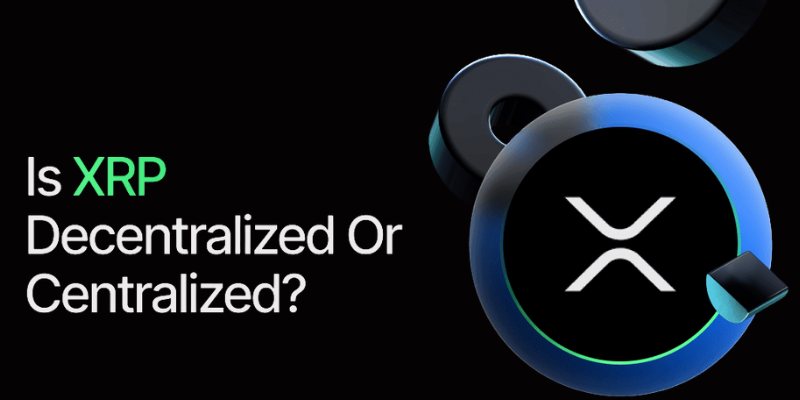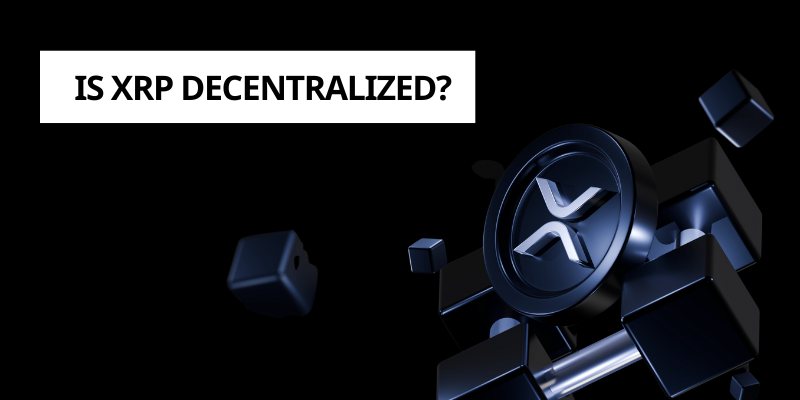The question Is XRP decentralized? resonates deeply within the cryptocurrency community, sparking debates among investors, developers, and blockchain enthusiasts. As Ripple’s native token, XRP powers a global payment network designed for speed, scalability, and cost-efficiency.
However, its degree of decentralization—compared to Bitcoin or Ethereum—remains a point of contention. This article dives into the technical and philosophical aspects of XRP’s structure, exploring whether XRP decentralized is a fair characterization and what it means for its role in the evolving crypto landscape.
Understanding XRP and Ripple
XRP is the cryptocurrency at the heart of the XRP Ledger (XRPL), a public blockchain developed by Ripple Labs. Unlike Bitcoin, which prioritizes mining-based consensus, the XRPL uses a unique Consensus Protocol where validators agree on transaction validity.
This design enables XRP to process thousands of transactions per second with minimal fees, making it a favorite for cross-border payments. Projects like Voltix and Credible, built on Solana’s high-throughput blockchain, echo similar ambitions for scalability, but XRP’s focus on institutional finance sets it apart.

The question Is XRP decentralized? hinges on how the XRPL operates. Decentralization in blockchain refers to the distribution of control—whether one entity dominates decision-making or if power is shared across independent actors. For XRP, the interplay between Ripple Labs, validators, and token holders shapes this narrative.
The Case for XRP Decentralized
Proponents argue that XRP decentralized is an accurate descriptor for several reasons:
-
Validator Diversity: The XRPL relies on validators to confirm transactions, and anyone can run a validator node. As of 2025, over 150 validators operate globally, with Ripple Labs controlling less than 5% of them. This contrasts with early criticisms when Ripple ran most nodes, showing a shift toward broader participation.
-
Open-Source Ledger: The XRPL is fully open-source, allowing developers to audit, fork, or contribute to its codebase. This transparency mirrors decentralized ecosystems like Solana, where projects like Credible leverage community-driven innovation.
-
No Central Authority: Unlike traditional finance, where banks dictate terms, the XRPL operates without a single governing body. Transactions are validated by consensus, not by Ripple’s fiat. This aligns with the ethos of decentralization, albeit in a streamlined form.
-
Token Distribution: Over 50% of XRP’s 100 billion supply is in circulation, with Ripple’s holdings locked in escrow and released gradually. This reduces concerns about centralized control over the token supply, a key factor when asking Is XRP decentralized?
Ripple’s efforts to decentralize further include the Unique Node List (UNL) system, where validators are chosen based on reliability, not ownership. This evolution suggests that XRP decentralized is more than a marketing claim—it’s a practical reality for the ledger’s operations.
The Counterargument: Centralization Concerns
Critics of the XRP decentralized narrative point to Ripple Labs’ influence:
-
Ripple’s Influence: Ripple develops the XRPL and holds a significant XRP reserve. While escrow limits its market impact, skeptics argue this gives Ripple undue sway, unlike Bitcoin’s miner-driven model.
-
Validator Trust: The UNL system, while open, relies on trusted validators recommended by Ripple or the community. If a majority align with Ripple’s interests, it could theoretically influence consensus, raising questions about whether XRP decentralized is fully realized.
-
Legal and Regulatory Ties: Ripple’s partnerships with banks and its SEC lawsuit (resolved in 2024) fuel perceptions of a centralized agenda. Unlike permissionless systems like Ethereum, XRP’s focus on regulated finance can feel less “crypto-native.”
-
Early Control: In its infancy, Ripple ran most validators, a fact critics still cite despite the ledger’s progress toward decentralization.
These concerns echo debates in other ecosystems. For instance, Solana-based projects like Voltix face scrutiny over node distribution, yet their communities drive decentralization over time—a path XRP appears to follow

Decentralization in Context
The question Is XRP decentralized? isn’t binary. Decentralization exists on a spectrum, and XRP’s design prioritizes efficiency over absolute autonomy. Compared to Bitcoin’s proof-of-work, XRP’s consensus is less resource-intensive but more reliant on trusted validators. Compared to Ethereum’s proof-of-stake, XRP sacrifices some governance flexibility for speed. Yet, its validator count surpasses many newer chains, and its open-source nature invites global participation.
Projects like Credible, which reward users via airdrops on Solana, highlight how decentralization evolves. Credible’s KYC requirements centralize onboarding, yet its token distribution fosters community ownership—similar to XRP’s balance of control and openness. Voltix’s DePIN model, rewarding CPU contributors, further illustrates that decentralization can take unconventional forms, much like XRP’s validator-driven approach.
Implications for Investors
For crypto investors, whether XRP decentralized matters depends on goals:
-
Adoption Potential: XRP’s semi-decentralized structure suits institutional use cases, driving partnerships with banks like Santander. This could boost its value, much like Solana’s scalability attracts projects like Voltix.
-
Risk Profile: Centralized risks (e.g., Ripple’s legal battles) are offset by the XRPL’s growing validator base. Investors must weigh these against XRP’s utility.
-
Portfolio Fit: If pure decentralization is your priority, Bitcoin or Ethereum may align better. If efficiency and real-world adoption matter, XRP’s model is compelling.
The Future of XRP Decentralized
As blockchain matures, the XRP decentralized debate will evolve. Ripple’s push to expand validator diversity and integrate DeFi features (e.g., AMM on XRPL) signals a commitment to decentralization. Emerging technologies, like AI-driven consensus seen in projects like Credible, could inspire XRP to refine its protocol further. For now, XRP strikes a balance—less decentralized than Bitcoin, but more practical for global finance.
In conclusion, Is XRP decentralized? yields a nuanced answer. The XRPL’s validator system, open-source code, and distributed token supply affirm its decentralized credentials, though Ripple’s influence tempers this. For investors navigating opportunities like the Credible Airdrop or Voltix Airdrop, XRP offers a case study in blending efficiency with autonomy. As the crypto market grows, understanding XRP’s unique position empowers you to make informed decisions in this transformative space.

